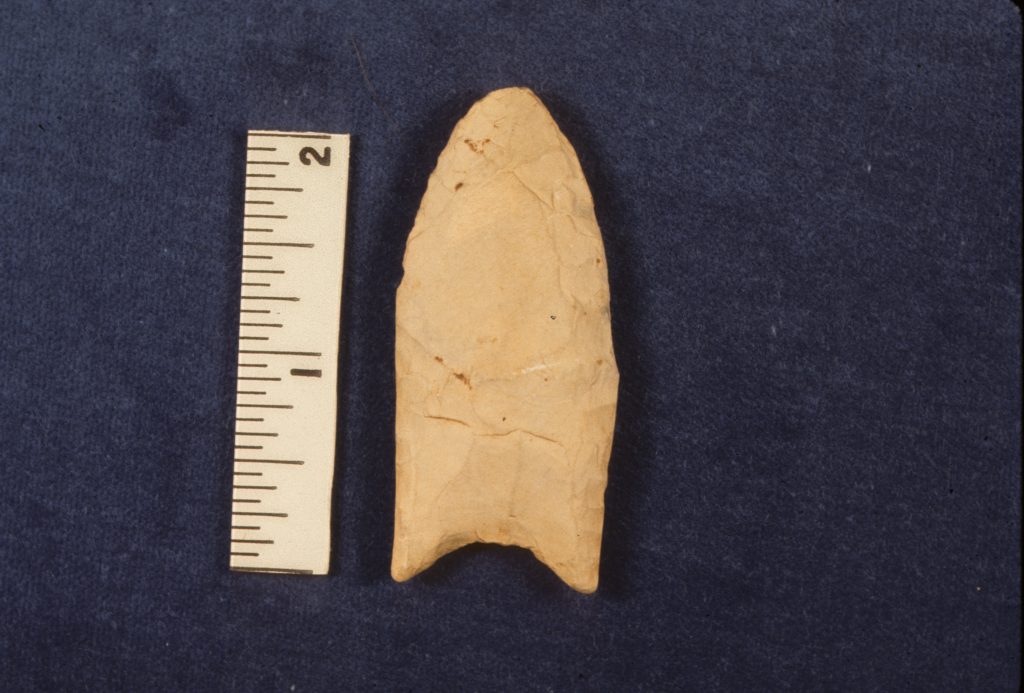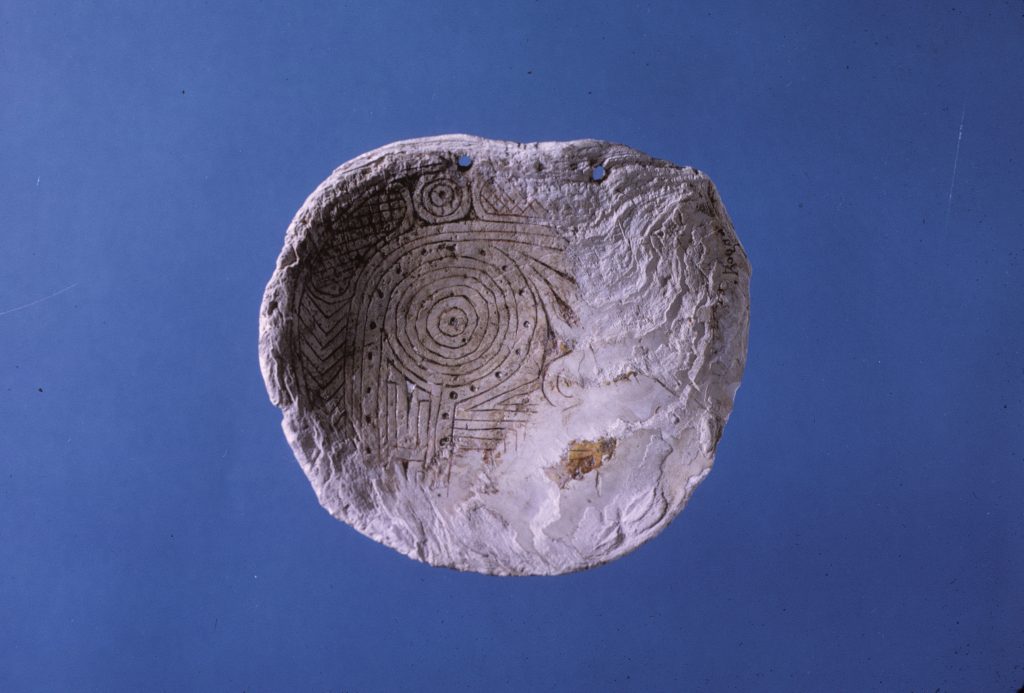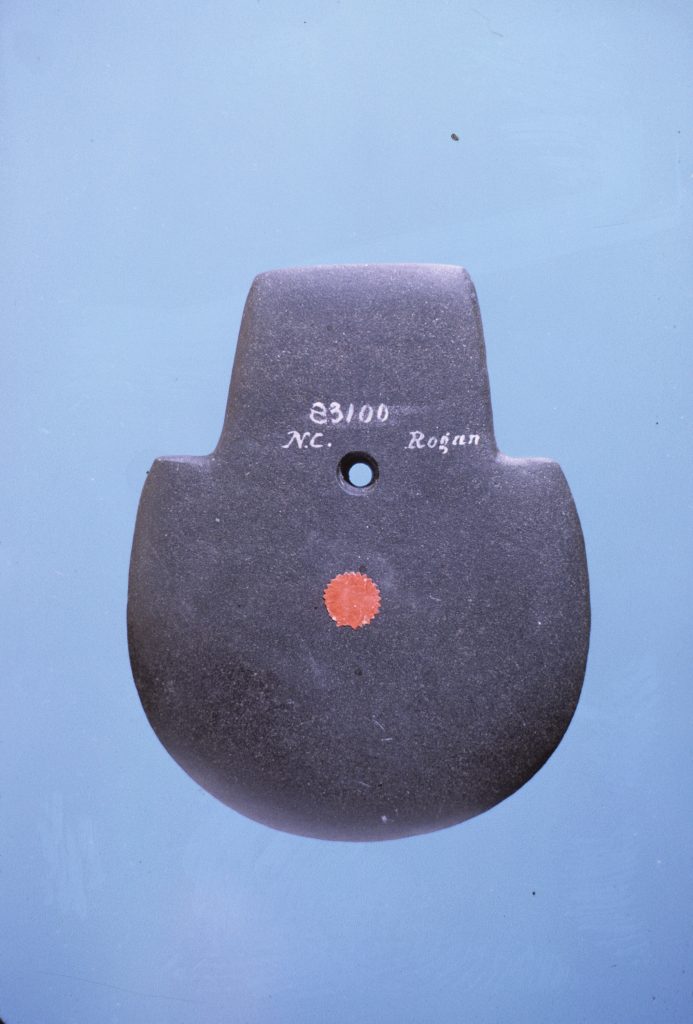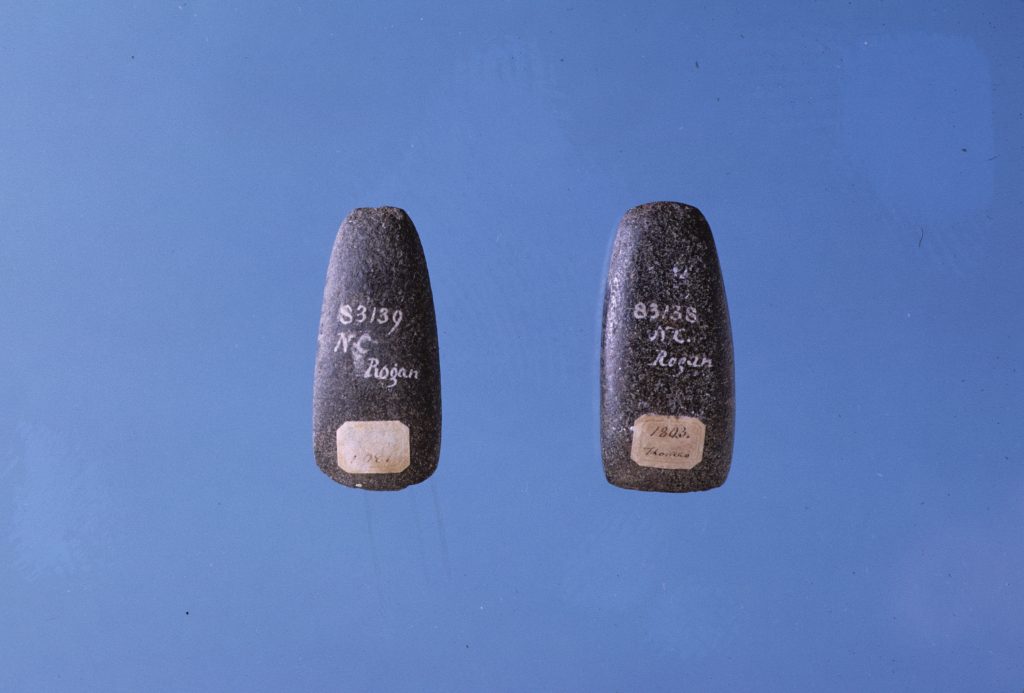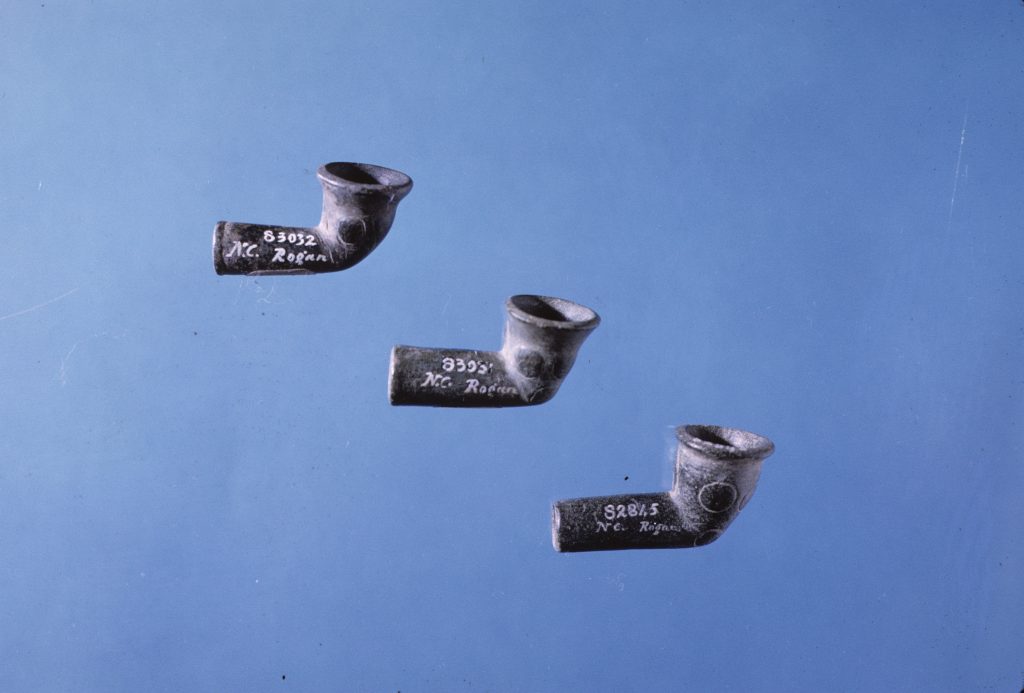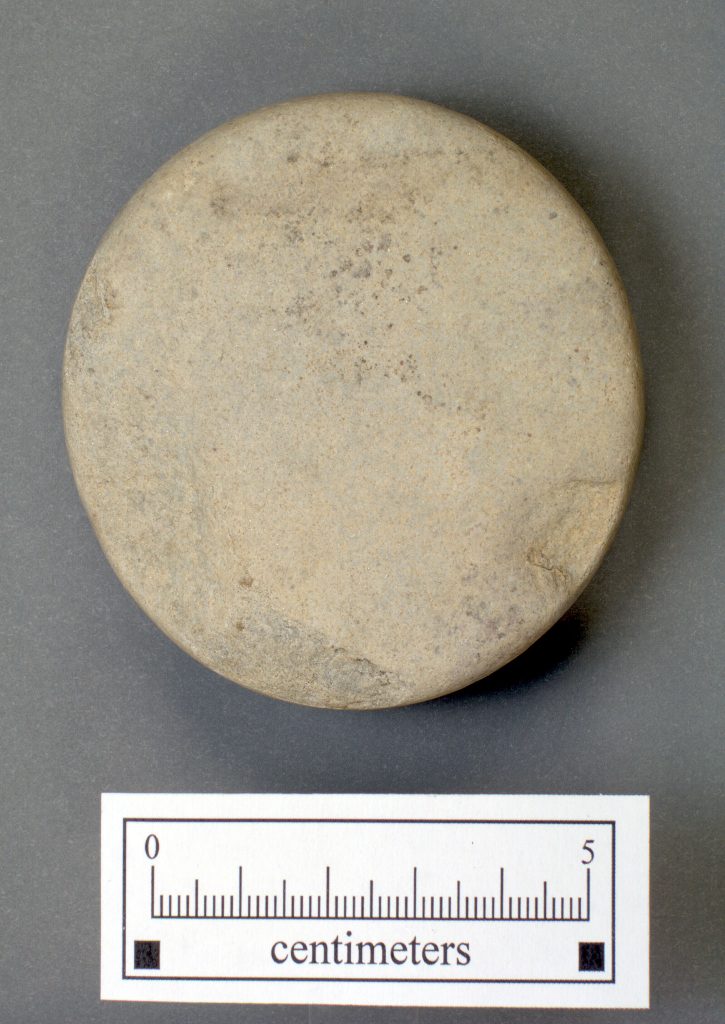Western Foothills
 In North Carolina, the Western Foothills constitutes the upper part of the Yadkin, Catawba, and Broad River drainages as they gather the waters flowing off of the front of the Blue Ridge. The geographic placement of the Western Foothills, straddling the Appalachian Summit and the Piedmont areas, makes it a transitional terrain that tends to combine aspects of both bounding regions. After the end of the Archaic, archaeological phases related to both the Appalachian Summit and the Piedmont regions can be detected.
In North Carolina, the Western Foothills constitutes the upper part of the Yadkin, Catawba, and Broad River drainages as they gather the waters flowing off of the front of the Blue Ridge. The geographic placement of the Western Foothills, straddling the Appalachian Summit and the Piedmont areas, makes it a transitional terrain that tends to combine aspects of both bounding regions. After the end of the Archaic, archaeological phases related to both the Appalachian Summit and the Piedmont regions can be detected.
The Paleoindian is the time of the earliest generally accepted arrival of people in the southeastern United States – about 16,000 years ago, or 14,000 B.C. Although earlier migrations of people into the New World have been hypothesized, currently there is no firm evidence of people anywhere on the continental United States prior to 14,000 B.C.
Our level of understanding of the Paleoindian period across the state is highly uneven, due to both the history of North Carolina archaeology and environmental and geological factors.
Paleoindian Chronology
Paleoindian in the Southeast is divided into the Early, Middle, and Late periods.
Spear points of the Early Paleoindian period (14,000 – 9,000 B.C.) are large, fluted lanceolates, very similar to the classic Clovis points of the West. What we know about the earliest inhabitants of North Carolina is based almost entirely on surface finds of these points. Concentrations of Early Paleoindian points have been noted in the Tennessee, Cumberland, and Ohio River valleys, as well as western South Carolina, southern Virginia, and the northern Piedmont of North Carolina.
In the Middle Paleoindian period (9000 – 8500 B.C.) the number of spear points increases considerably and regional variability in spear point forms emerge. The Cumberland, Suwanee, and Simpson point types are thought to be typical of this period. One thing all have in common is a narrowing or “waisting” at the base.
The Late Paleoindian period (8500 – 7900 B.C.) shows increased population growth. Dalton points are the diagnostic Late Paleoindian point type. By the end of the Paleoindian Holocene climatic conditions prevailed and the basic hunting and gathering lifeway that persisted for the next 5000 years was set.
Paleoindian Settlement and Subsistence
Paleoindian settlers in the Southeast found a rapidly changing landscape. Current evidence suggests that many of extinctions of Late Pleistocene megafauna – including the horse, mastodon, and mammoth – were complete by 8500 B.C.
East of the Mississippi River almost no Paleoindian tools have been found with these animals. Environmental differences between the Eastern and Western parts of the continent may have necessitated very different adaptions. By the Middle Paleoindian period, if not earlier, the subsistence pattern was probably very similar to that of the Early Archaic period.
Most southeastern Paleoindian sites where more than a single point has been found are related to stone-quarrying activities. This pattern reflects a generalized foraging where groups rarely engaged in subsistence activities that produced recognizable traces in the archaeological record.
Paleoindian in the Western Foothills
Because the Foothills is a region of transitional terrain, straddling the Appalachian Summit and the various Piedmont areas, it somewhat combines aspects of both. In the Appalachian Summit, evidence for Paleoindian sites is extremely rare and there have been no buried, stratified sites found. In the higher elevations of the southern Appalachian Summit, currently extinct Pleistocene animals probably persisted later in the spruce and fir boreal forests. In the Piedmont region, the boreal forest only existed during the full glacial period (17,000 to 14,500 B.C.), before we have good evidence for the arrival of Paleoindians in this area. As temperatures warmed, by 10,500 B.C. the spruce and firs were replaced by deciduous forests consisting of oak, hickory, walnut, elm, willow, and sugar maple. Warming continued through 7,000 B.C., bringing new forests of sweet gum, chestnut, red maple, and tupelo gum. Within the climatic changes occurring, when Paleoindians first came into the Piedmont, the winters were harsher and summers cooler than we experience today. In this area, people co-existed with extinct Pleistocene animals for only about 1000 years.
Close Paleoindian
The Archaic Period (8000 – 1000 B.C.) is an overarching time period covering over half of the time-span people have lived in North Carolina. This vast time has been explored by finding well-preserved deposits in rock-shelters and stratified, deeply-buried open sites in alluvial floodplains. The Archaic is generally thought of as a period dominated by nomadic, relatively small bands pursuing a hunting and gathering way of life, but there is evidence that some Archaic people settled into larger and more permanent sites relatively early.
From the coast to the mountains, the Archaic period began with wandering bands of hunters and gatherers who faced a wide variety of changing environmental conditions. These bands occasionally came together at favored locations along major river valleys, but most of their time was spend in small groups scattered across the landscape foraging for food and raw materials.
Toward the end of the Archaic period, large groups began to settle down and live most, if not all year in areas rich in raw material and food resources. This settled life spawned the beginnings of plant domestication and use of pottery, hallmarks of the succeeding Woodland period.
The Archaic in the Western Foothills
Unfortunately, our knowledge of the Archaic in the Western Foothills mirrors that for the Appalachian Summit. Very few deeply stratified sites have been excavated, so we do not know very much about the people living in this area. If you would like to learn more about the Archaic in the Appalachian Summit (which leans heavily on research from southeastern Tennessee), you can look at the Detailed Overview on the Appalachian Summit region page. In comparison, much more research has occurred in the Piedmont region. Here, deeply stratified sites have yielded long sequences of Archaic cultures. To learn more about the Archaic period in the Piedmont, explore the Detailed Overviews on the North-Western Piedmont, Southern Piedmont, North-Central Piedmont, Central Piedmont, and Northeastern Piedmont region pages.
Close Archaic
Three interrelated innovations marked the end of the Archaic period and the beginning of the Woodland period: pottery-making, semi-sedentary villages, and horticulture. All had their origins in the Archaic but became the norm during Woodland times.
During the Late Archaic period, people living along the south Atlantic coast from Florida to North Carolina had begun to make fiber-tempered pottery. Stalling series pottery, made by molding lumps of clay and fibrous material into simple vessel forms , was made as early as 2500 B.C. By the beginning of the Woodland period in North Carolina, several different ceramic traditions had been established across the state.
The widespread appearance of pottery-making is viewed as going hand in hand with an increasing reliance on seed crops and more permanent settlement. Domestication of early cultigens laid the groundwork for later acceptance of tropical cultigens. Corn was not widely grown until after A.D. 700 and did not become an important food crop in many areas until after A.D. 1000. With the introduction of beans around A.D. 1200, the eastern agricultural triad of corn, beans, and squash was completed.
In North Carolina, the Woodland is divided into Early, Middle, and Late periods. Along the coast and through much of the Piedmont, the Late Woodland continues until the Contact period, while in the Appalachian Summit, Western Foothills, and the Southern Piedmont, Mississippian and Mississippian-influenced societies developed after A.D. 1000.
Piedmont Tradition Early and Middle Woodland Periods (1000 B.C. – A.D. 800)
Although we know relatively little about their origins during the Early Woodland period, cultures throughout most of the Piedmont steadily evolved along an unbroken continuum from about A.D. 1000 until the time of first contacts with Europeans. Subsistence seems to have remained evenly balanced between crop production and wild plant and animal resources. Social distinctions were based primarily on age and sex. Egalitarian Woodland societies were woven together by kinship and leadership roles were achieved rather than ascribed.
During the early part of the Woodland Period, Piedmont Early Woodland and Middle affiliations in the Western Foothills remain murky in the Western Foothills. The stratigraphic and stylistic relationships among various ceramic types during the first half of the Woodland period are still unclear. Badin, Yadkin, Vincent, and Clements series ceramics are guides to occupations of the Piedmont during this time.
Aquatic resources are important during this time and a wide variety of mammals and birds were eaten. Several species of weedy plants, including maygrass, knotweed, goosefoot, and sunflower, although no direct evidence of these practices have yet been found in the Piedmont.
During this time the bow and arrow completely replaces the atlatl.
The Woodland Period in the Appalachian Summit
While Piedmont Woodland cultures were characterized by continuity and gradual internal change, the Woodland Period of the North Carolina mountains was a time of increasing cultural diversity stimulated by ideas from outside the region. Much of what is known about the Early and Middle Woodland periods in the Appalachian Summit is the result of research in eastern Tennessee.
Beginning in the 1960s, the University of North Carolina’s Cherokee project established the chronological and stylistic markers of the Woodland Period and research by the University of Tennessee at Knoxville filled in details of settlement, subsistence, and overall cultural change and adaptation.
Connestee Phase (A.D. 200-800)
In the Western Foothills, stronger connections to the Appalachian Summit cultural sequence are observable by the Middle Woodland period Connestee phase. In spite of a clear developmental relationship with the Pigeon phase, Connestee phase is distinctive. Exotic artifacts show connections with other Middle Woodland groups and indicate participation in the Hopewell interaction network. Later in Connestee phase, southern influences from the Swift Creek area of southern and central Georgia continue to be felt after the Hopewell climax.
The South Appalachian Mississippian Tradition
The chronological and cultural relationships between Pisgah, Qualla, and Lamar phases are indirectly addressed by sites in the Catawba River valley, where temporal overlap forces a re-examination of the traditional view of a Pisgah-to-Qualla developmental sequence.
The Eastern Fringe of the Appalachian Summit (after A.D. 1350)
Archaeologists believe that during the time of the Pisgah and Qualla phases in the Appalachian Summit, the people who lived below the Blue Ridge in the Upper Catawba River basin in Burke and McDowell counties show affinities to both the prehistoric Cherokee and the Catawba. Two archaeological sites, McDowell site in McDowell county and Berry site in Burke county, illustrate the complexities of the period.
According to David Moore’s 2002 volume “Catawba Valley Mississippian” the McDowell site is a relatively large village dating to the Pleasant Garden phase in the fifteenth and sixteenth centuries (A.D. 1400 – 1600) whose people participated in regional activities with Pisgah phase people to their west and Burke phase people to their east.
Excavations at the Berry site revealed a major Burke phase component with similarities to Middle Lamar phases in Georgia and the Middle Qualla phase in the Appalachian Summit also dating to the fifteenth and sixteenth centuries. Because inhabitants of McDowell site interacted with both Pisgah-like people to their west and Qualla/Lamar related people to their east at Berry site, they illustrate the problem with viewing Pisgah and Qualla phases in the Appalachian Summit as purely sequential developments.
Moore notes that the broader interactions of Burke phase and other surrounding late prehistoric groups make it clear “that groups practicing South Appalachian Mississippian lifeways occupied not only the south-central Piedmont of North Carolina (Pee Dee culture), but an equally large portion of the western Piedmont region as well.” At one of these sites (Berry) the history of the earliest European contacts in North Carolina is presently being unearthed.
Close Woodland
The time of contact between Indians living in North Carolina and Europeans arriving from Spain and England varied considerably across the state. The expedition of Hernando de Soto passed through western North Carolina in the spring of 1540. Pardo’s expeditions into the same areas came less than 30 years later. The first English attempts at settlement in northeastern North Carolina came about 20 years after that, starting in 1584. But it was not until after about 1650, when English explorers, traders, and settlers came from Tidewater Virginia, that North Carolina’s Indians felt the brunt of the European presence on their land.
Accordingly, the beginnings of these arrivals do not necessarily herald the beginnings of significant changes in the histories of North Carolina’s tribes. Overall, however, this was a time of sweeping and often devastating change.
Contact in the Appalachian Summit and Western Foothills
Both the Appalachian foothills (the upper Catwaba valley) and the Appalachian summit in western North Carolina were visited by the de Soto and Pardo expeditions in the middle 1500s. The Berry site, which was occupied during this time, appears to have been the town the Spanish described as Joara, when it was visited by the de Soto expedition in 1540 and by the Juan Pardo expedition from 1567-68.
After the Spanish expeditions, the Cherokee in and near the Appalachian Summit were insulated from European contact for a century. Some degree of trading and raiding were carried on with the Spanish settlements to the southeast. Then, in the 1670s, trade relations were set up with Virginia traders. In the early 18th-century English traders began to push west through the Blue Ridge mountains and along the upper Piedmont of South Carolina and Georgia. Here they found the Cherokee, a populous people in a widely scattered collection of towns. The Late Qualla phase represents Cherokee culture during this time period.
The Late Qualla phase (A.D. 1700 – 1838)
The Cherokee remain somewhat isolated until the close of the Tuscaroa War in 1713. By the 1730s European diseases had spread to the Cherokee country. A smallpox epidemic in 1738-39 destroyed half of the tribe. During the mid-century the Cherokee were increasingly drawn into European rivalries and English, and later American, expeditions into the heart of Cherokee territory destroyed towns and killed many Cherokees. In these wars the Cherokee lost much of the political and military power they had previously possessed. Beginning with the Treaty of Hopewell in 1785 and culminating with the Removal of 1838 each treaty cost them more and more of their mountain homeland.
The pottery of the Late Qualla phase reflects the stability and conservatism that mark the beginning of this phase. No drastic changes demarcate the Late Qualla ceramics from pottery of the Middle Qualla phase. Pottery from the Townson site, which dates to the second half of the Late Qualla phase, is similar to earlier Qualla pottery, but decorations are bolder in form and more crudely executed.
The Cherokee probably built both circular and rectangular houses. Throughout the Southeast, circular houses were used mainly as winter dwellings and rectangular houses were summer dwellings. After about 1776 rectangular houses became the dominant form.
House form at Townson also differed greatly from earlier rectangular Qualla houses. Instead of individual posts set in the ground, the walls of the house at Townson were formed by split rails laid one atop another and anchored to four corner posts. Cracks were chinked with clay. The house probably looked much like a contemporary Euro-American log cabin. However, inside the house was the traditional central puddled-clay hearth found in earlier Cherokee houses. A very similar Cherokee house was described in a letter relating the experiences of a soldier who participated in the 1776 attacks on Cherokee towns.
As house types changed during the Late Qualla phase, so did village configurations. Townson site consists of houses scattered along a terrace, whereas Middle Qualla villages were compact and usually stockaded. This process of population dispersion intensified as acculturation and pressures to change increased . By the time the Cherokee were forcefully removed in 1838 most families lived in isolated farmsteads and small hamlets.
Some Cherokee habitations had large numbers of artifacts, including non-native commercially manufactured items, while others contained mostly native-made items. These differences probably reflect varying degrees of acculturation and participation in the colonial market economy. Subsistence practices also changed. The Cherokees readily adopted Old World animals, and most families kept horses, cows, pigs, and chickens.
Although the population became more dispersed, town houses continued to be used and rebuilt at the same locations long after the main villages had been abandoned. The religious and ceremonial realms of Cherokee culture retained their traditional form and practice.
Close Historic
- Fluted spear point in a private collection from Burke Co., NC
- Kirk Corner-Notched spear point in a private collection from Burke Co., NC
- Ceramic bowl from the Bristol Creek site in Burke Co., NC
- Shell gorget from the T. F. Nelson mound in Caldwell Co., NC
- Metal ornaments from the T. F. Nelson mound in Caldwell Co., NC
- Stone celt from the W. D. Jones mound in Caldwell Co., NC
- Stone spatulate axe or spud from the W. D. Jones mound in Caldwell Co., NC
- Stone celts from the W. D. Jones mound in Caldwell Co., NC
- Clay pipes from the W. D. Jones and T. F. Nelson mounds in Caldwell Co., NC
- Stone discoidal from the Hardins site in Gaston Co., NC
- Stone spatulate axe or spud from the Hardins site in Gaston Co., NC
- Pottery and stone disks in private collection from the McDowell site in McDowell Co., NC

